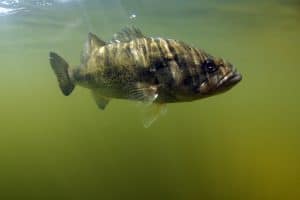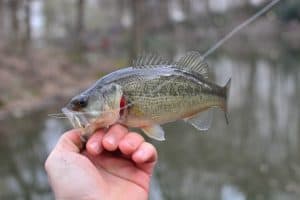Largemouth bass are a type of freshwater fish with a wide range of habitats all around the world. They can be found in both salt and freshwater, from the Mississippi River to the Amazon River. Widely considered one of the best gamefish in America, largemouth bass are prized for their fighting abilities and their delicious taste.
In this blog, we’re going to take a closer look at this creature and answer one simple question: do largemouth bass have teeth?

Do largemouth bass have teeth
Largemouth bass are the largest members of the sunfish family, and they have lots of teeth. Along with their powerful jaws, they use their teeth to tear prey into smaller pieces. They do not chew their food, but instead swallow it whole.
Depending on the size of the bass, they can have anywhere from 40-100 teeth on each side of their mouth. These teeth are quite sharp and are used to shred prey into small pieces that they can swallow more easily. Bass use these sharp teeth for hunting prey items like crawfish, frogs, insects, and other fish.
The largemouth bass is a powerful creature that is built for fighting and game fishing. Luckily for us humans, we don’t have to worry about being on the menu!

Why do largemouth bass have teeth?
You might think that all fish have some type of teeth. After all, they use their teeth to eat things like algae and plankton, which is the basis of their diet, right?
However, this isn’t true. Some fish don’t use teeth at all to eat food. In fact, many other types of freshwater fish simply swallow their food whole without any chewing or processing whatsoever.
The first reason for largemouth bass to have teeth is to help with predation. When the fish is hunting for food, it can always rely on its sharp teeth. The second is to help the bass feed. It is not uncommon for a largemouth bass to devour a big fish for lunch, so they need to be equipped to handle heavy meals.

How to avoid getting bitten – holding a largemouth bass correctly
Although largemouth bass are commonly regarded as a pleasant game fish, there are some precautions you should take while fishing for them. One of the worst things that can happen when you’re fishing is getting your finger bitten by a largemouth bass.
Luckily, there are many things you can do to avoid this situation. You can use gloves or hooks when handling your bait, or even tie it to the end of your rod.
To hold a largemouth bass correctly, you need to learn the proper grip, and the right way to lift the fish from the water. Just make sure to hold the side of its mouth, as can be seen on the last picture in this article, as the bass has its teeth in the upper and lower parts of its mouth.
If you want to ensure that you don’t get bitten every time you go fishing, be sure to take these precautions so that you can enjoy your experience!
Is bass thumb dangerous?
These fish are not dangerous to humans because they typically feed on smaller fish or frogs. If you were ever bitten by a largemouth bass, it would probably just feel like being nibbled on your skin by a small animal. The bite would hurt a bit, but likely wouldn’t cause any serious injuries.
Bass thumb is not dangerous. When it does happen, it can be painful. In most cases, you can just wash it off with soap and water and disinfect it. If it gets infected, you should see a doctor.

Conclusion
Largemouth bass are one of the most popular fish in America. They are also known for their aggressive nature. One of the most important things to know about largemouth bass is that they have teeth. This can be dangerous if you are holding the fish. The best way to avoid getting bitten is to hold the fish with your hand on the side of its mouth. You can also use a net. When you are fishing, don’t forget to wear gloves just in case!